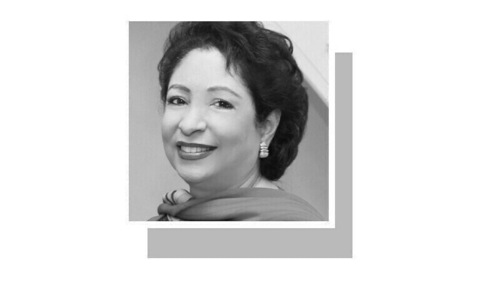KARACHI: Currency experts on Saturday feared the US dollar may resume appreciation against the rupee from the next fiscal year.
The dollar has been restricted to around Rs278-280 for more than four months and is likely to rise once the interest rate is reduced.
“We see the local currency at Rs295 to a dollar by December-end and interest rate at 15 per cent with a key assumption of political stability,” said Faisal Mamsa, CEO of Tresmark.
“In our view, the rupee will remain locked around Rs280 per dollar till June end, but after that, it will undergo a gradual and more controlled depreciation of around Rs2 per month (equating to annual depreciation of about 10pc as Pakistan looks to cut interest rate and spur GDP growth and economic activity), he said.
In the foreign exchange market short-term swaps have been volatile, yet overall activity is subdued. Exporters’ forward bookings have dwindled as they expect the rupee to depreciate quickly post-budget and as part of the IMF’s anticipated prior actions.
“This seems to be in contrast to foreign traders who have invested more than $35 million in T-bills, implying that they do not see any sharp depreciation,” said Mr Mamsa.
A few reports have also cited the Pakistan budget team’s rate assumption of Rs295 per dollar as a benchmark.
Most currency experts believe that the current stable exchange rate is managed, and they consider the State Bank the final authority in determining the dollar’s value in the interbank market.
Currency traders said they have lost their jobs in the interbank market since the banks provide dollars for imports only when they have them. Earlier, the currency traders were there to arrange dollars for the importers.
“The State Bank opens the rate, and any bank cannot change it. The opening rate remains almost unchanged during the entire working hours of the inter-bank market,” said Atif Ahmed, a currency dealer in the inter-bank market.
However, currency dealers said the market has sufficient liquidity, and there is no rush to buy dollars. They said imports are still restricted and specific to several sectors. The imports have been eased during the last three months to meet the demand for raw materials. This ease has increased the imports but is expected to bring some economic growth against a contraction in FY23.
The coalition government has been promising a growth-friendly budget, which may compel it to further liberalise imports. This will push up the demand for dollars, and an appreciation seems imminent.
Published in Dawn, June 2nd, 2024













































